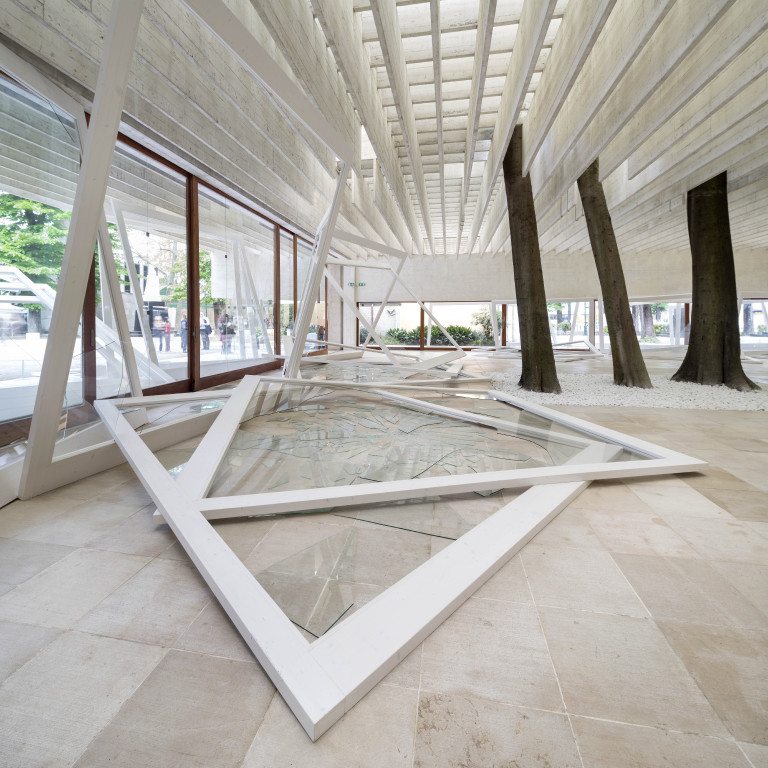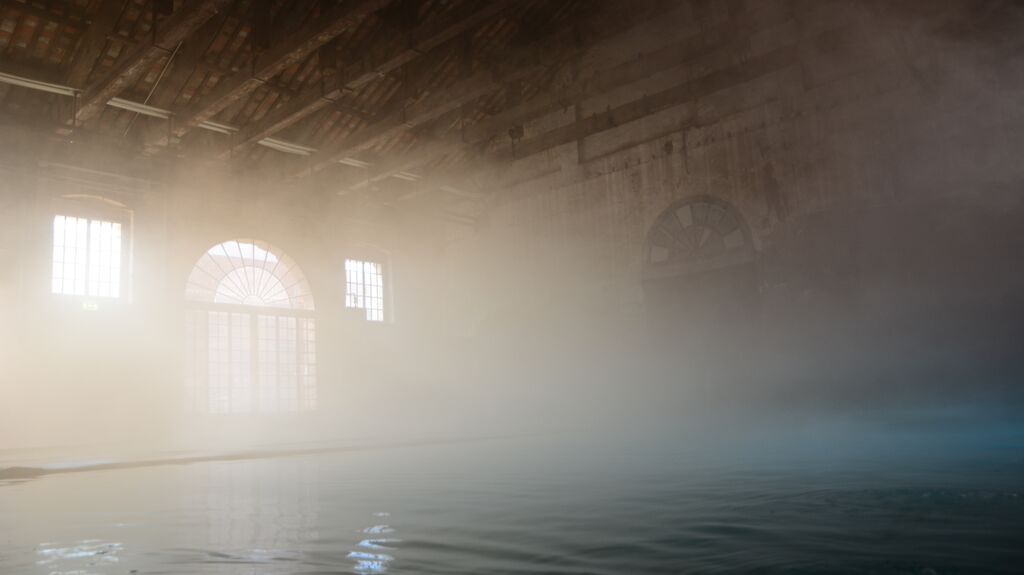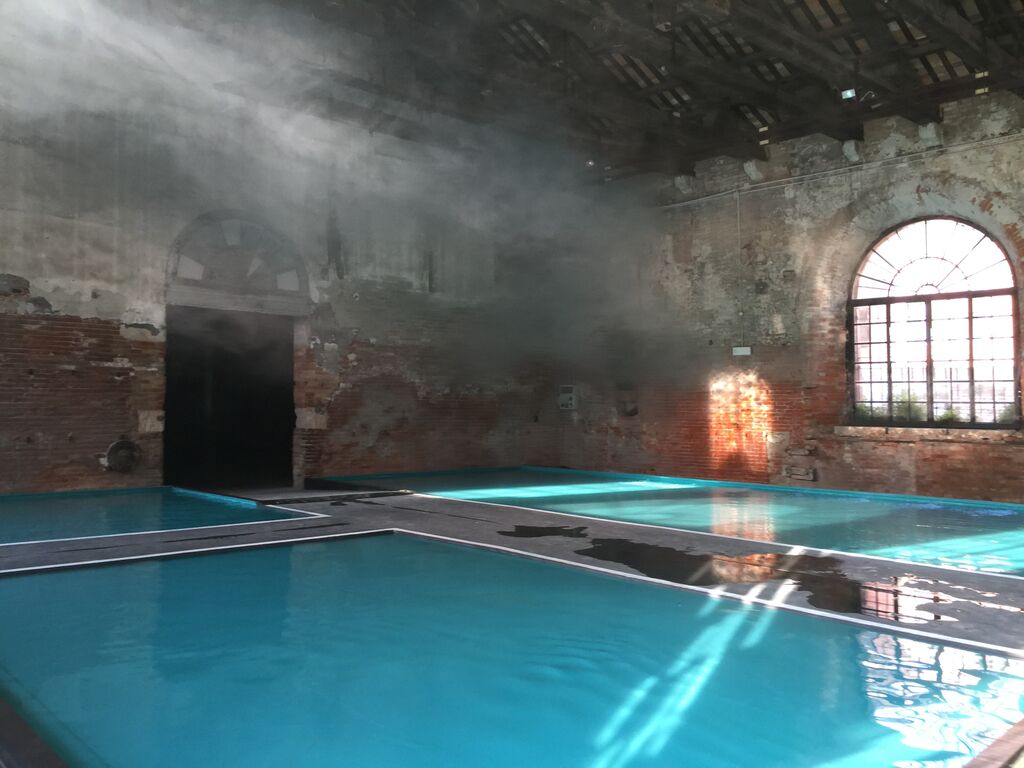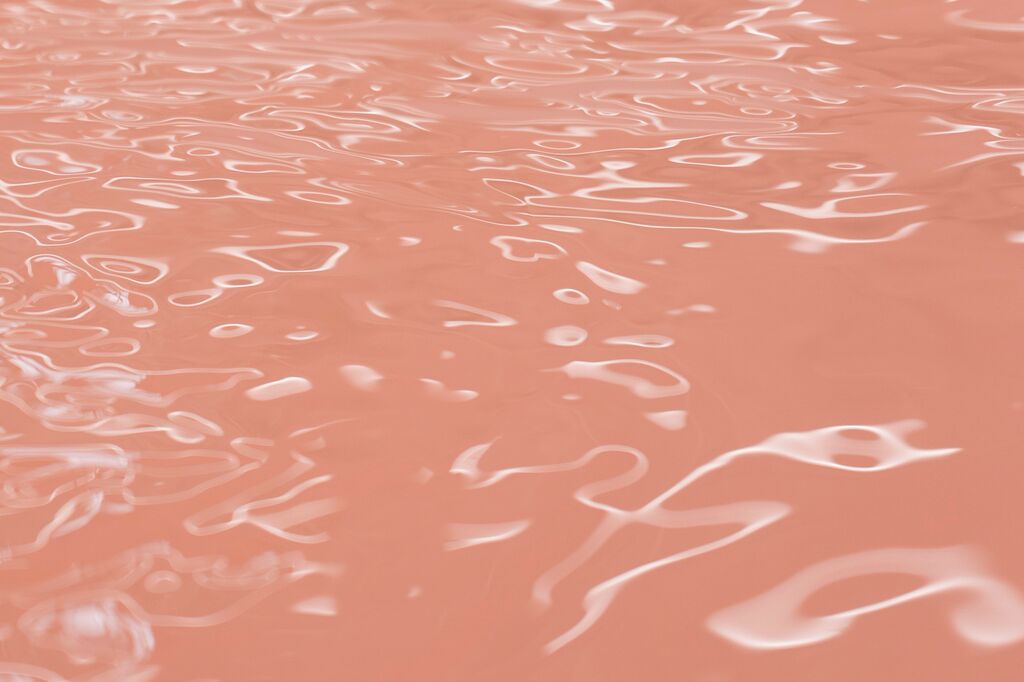Wandering through the Pavilions in the Giardini and the Arsenale at this year’s edition of the Venice Biennale, one has an impression of stepping in and out of a variety of all-absorbing small universes. Immersive installations seem to have become a popular tool for nations to engage audiences.
After struggling through the disillusioning and almost apocalyptic All the World’s Futures, these sensorily immediate installations provide a welcome change for the weary visitor. Crossing the Tide, for example, a discrete dreamscape-like environment made up of water and damp sky by Taiwanese artist Vincent J.F. Huang for the Tuvalu Pavilion (Arsenale), offers a moment of repose while reminding us of the possibly dramatic consequences of climate change. The experience of traversing the room over a submerged bridge evokes feelings of instability and disorientation, drawing on the precarious situation with which inhabitants of fragile islands in the Pacific are currently faced owing to rising sea levels.
At the Giardini, the Nordic Pavilion presents Rapture by Camille Norment, a site-specific installation using sculptural and sonic elements to restage the mystery surrounding the glass harmonica. This instrument, which dates from the eighteenth century, makes use of glass and water to evoke ethereal sounds. At the time believed to entrance people, and more specifically to sexually arouse women, the glass harmonica eventually got banned. New arrangements by Norment question our contemporary relationship towards concepts of musical harmony while at the same time making references to the decisive role of water in the Venetian context.
Though the most fascinating sensory experience is to be found at the Swiss Pavilion, where Pamela Rosenkranz transcends all expectations with Our Product, a critical concept combining scientific research with clean aesthetics. Curated by Susanne Pfeffer, the challenging constellation makes use of a subtle interplay of immaterial sensory factors such as baby skin odour, the sound of flowing water and misty colour planes to guide the visitor through the installation. Passing through the clinical minty green areas of the pavilion, you’re eventually confronted with a large basin holding a liquid mass made up of Evian, Viagra and silicone to name a few – products extensively used for their aesthetically improving promises. The pink monochrome mixture resembles the standardized and idealized Northern European skin tone, critically pointing out the historical, cultural and biological specificities defining our human species. Our Product is accompanied by a free online catalogue, providing more information on this scientifically substantiated and highly thought-provoking concept.












